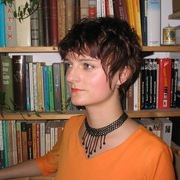How The Remote Senoi Tribes Use Dreams for Personal Growth

Recently I read a quote by the late Russian novelist, Vladimir Nabokov, describing sleep as "the most moronic fraternity," because it supposedly reduces us to an egalitarian non-sentience.
How little does our Western civilization know about the true nature of sleep and dreams! Nabokov laments "that nightly betrayal of reason, humanity, genius" as a "mental torture," while I tend to think of dreams as our nightly portal to our humanity and genius.
This dismissive attitude towards sleeping and dreaming seems prevalent in our contemporary culture.
In the corporate world, for instance, sleep is almost regarded as a lazy luxury. I remember in my previous career as a lawyer how we used to boast about how late we went home and how few hours sleep we got.
A short story by Jeanette Winterson, called Disappearance I, features a dystopian society in which sleep has been declared illegal. We are not there yet - but there certainly is a scornfulness towards a regular good night's sleep. After all, most people believe that sleep is an unproductive time, little of which should be wasted.
But is it truly so?
The Dream-Beliefs of Indigenous Tribes
Indigenous people all over the world tend to regard dreams as more important than laws or external regulations of life.
In shamanic cultures, dreams are seen as gateways into non-physical realities, which we all visit nightly, and finally when our physical bodies die. Meanwhile, Tibetan meditators learn to lucid dream in order to be best prepared for the bardo state (the realm of consciousness between death and rebirth).
Even if you don't adhere to the notion that dreams prepare us for death - the opposite is also true: dreams prepare us for life!

Meet The Senoi Tribes
The Senoi are a group of indigenous tribes in Malaysia. Their habitat is hidden so deep in the jungle that researchers can only access it only by helicopter or an adventurous riverboat ride.
The Senoi spend little time providing for the necessities of material life. They help each other to build a house in a week or two and they gather food cooperatively, which only takes a few hours every day.
They are famous for being free of crime and mental illness, showing virtually no signs of neurosis. Their secret? The less attention as they spend on their material surroundings, the more they spend on their dreams...
Children are encouraged not only to remember and to report their dreams, but also to behave in a positive way while dreaming. For example, if a Senoi child reports that he has been chased by a wild animal in his dreams and ran away, adults would encourage him to face the fear next time.
Naturally, a tiger is dangerous in waking life and it is best to run away from it - but dreaming of a tiger is a great opportunity for facing our own fears.
Children in every culture tend to dream about dangerous situations, especially being chased by animals or monsters, but the Senoi children are encouraged to fight them. As a result, their nightmares disappear by the time they turn teenagers, and so do their day-time fears.
Based on their experiences with the Senoi people, anthropologist Kilton Stewart and, later, creative dream researcher Patricia Garfield suggested a system of psychological growth using lucid dreaming. Indeed, Garfield identified three basic rules the Senoi children are taught to apply in their dreams:
#1 - Confront and Conquer Danger
This rule teaches not to become a victim of any situation. In modern psychology it is called assertiveness training. It's not about seeking out dangerous situations or being provocative, but rather about not allowing anyone or anything to limit your personal freedom.
#2 - Advance Toward Pleasure
This rule might not come naturally to many of us, especially if we were raised with religious beliefs about pleasure being a sin, or else seeing pleasure as being self-indulgent or somehow indecent.
However, pleasure is therapeutic: it helps us to love and respect ourselves (without which we cannot love and respect others), and to reduce stress and tension.
A look into my own dream diary revealed something remarkable: whenever my dreams were pleasurable, the following day I was more productive and more helpful to others.
#3 - Try to Achieve a Positive Outcome
This rule is in alignment with contemporary teachings like positive thinking: adopting an attitude towards finding positive solutions.
The psychological landscape of lucid dreams is such that our dream-reality reacts much more directly to the quality of our thoughts than our waking reality. A dream can change much faster and in a much more direct way than our waking reality can.
Therefore it is a perfect training ground to see the results of our thinking: fearful thoughts will produce nightmares, but as soon as we adopt a brave and solution-oriented approach, our dream landscape will change accordingly.
A Personal Example
I once lay in my bed when I became aware that a big black wolf-like monster was up to my face. Potentially this was so scary that it could have frozen me in fear, but luckily I began to think that this cannot be waking reality.
"I must be in some sort of non-physical reality," I thought, which helped me achieve lucidity. From that moment on I concentrated on dispelling the intruder: forming a strong, focused intent was enough to send it away. It was an empowering experience indeed: the reality I experienced followed the quality of my thoughts.
The Senoi Rules and Lucid Dreams
Experimenting with the Senoi rules, I found that lucid dreams provide a fantastic opportunity to turn our weaknesses into strength.
Another personal example comes to my mind. Throughout my life, I was always extremely interested in the ultimate nature of reality, and learned a lot about things which do not normally meet the naked eye. I made many extraordinary experiences which I feel have proven to me the existence of non-physical realities. Despite that, doubt has always been one of my greatest enemies.
So, one night I had a lucid dream, which was so powerful that it eventually turned into an out-of-body experience. I enjoyed it tremendously, especially since it involved flying. (How hard I find waking up from those!)
I was flying towards a wall, while I remember thinking: "Fly through it. You have heard the accounts of many people: it is possible to fly through walls in non-ordinary realities." So, I tried to fly through the wall, but I doubted myself so much that I only banged my head against it. (At least it didn't hurt.)
Then I became conscious of the opportunity of self-development and began telling myself: "You must lose your doubt. You must believe you can, and you will be able to."
I told this to myself for a long time, and soon enough I began to believe. I pushed my body through a wall which suddenly felt less dense and did what I previously thought was impossible.
Final Thoughts
In a lucid dream world, many of the laws of physics no longer apply. Therefore we can fly, because the law of gravity is no longer our concern. However, the laws of the psyche remain the same.
As the American industrialist, Henry Ford, once said: "Whether you think you can, or you think you can't - you're right."
If we learn to believe in ourselves in a dream, we will believe in ourselves also while awake too.
About The Guest Author

Viktória G Duda is a hypnotherapist, trainer and author, based near London, UK. She holds a PhD in social anthropology and first became aware of how human beings induce altered states of consciousness, out-of-body experiences and lucid dreams through the practices of indigenous people.
Viktória has been inducing lucid dreams and out-of-body states for more than a decade, as well as helping others to make sense of their own mystical experiences. Visit her website at www.viktoriaduda.com.
















